Not everyone thinks about the origin of some words that many of us recite, see or hear almost every day. But many words have an unusual story. And especially interesting are words that come from the names of real people whose actions or inventions so impressed others that they became associated with each of person and they are firmly fixed in the human vocabulary.
|
In the first half of the twentieth century one of the most distinguishing features of military uniforms of many kinds of troops were pants breeches.
These pants are obliged to French general Gaston Breeches (1830-1909) for their name. According to legend, during the Franco-Prussian War Gaston Breeches was badly wounded, as a result his right thigh was in unnatural way crooked. As cavalry uniforms of that time were leggings that tight fitt to legs, the general had to rarely go out in the world. But once he was on the ball, with a completely unexpected pants, extremely free in the hips and very narrow below to the knee. While guests looked at Breeches, beautiful girl Anne-Marie exclaimed: “Oh, General, how beautiful! General was so moved by the support of beautiful stranger that within a few months, made her a proposal and she took this proposal without hesitation. The others military liked a new style, and especially the cavalry, as the pants were extremely comfortable for riding. Subsequently, in breeches were dressed infantrymen, gunners, pilots and then they went in everyday men’s and women's fashion.
|
 |
|
Approximately at the same time, during the First World War of 1914-1918, in the army random samples of naval jackets became widespread – as an imitation of the English and French models that have received the general name “french” for the name of the British commander, Field Marshal John French (1852 -1925). The distinctive features of french were mild or turndown collar, which fastens with buttons, adjustable strap or by using a split cuff , large pockets on the chest and skirts with zipper buttons. Although there were exceptions among some aviators, British officer jacket became widespread – open collar with a shirt and tie.
The Red Army command staff was dressed in a jacket until 1943, and in everyday life, primarily due to Joseph Stalin, this jacket remained one of the favorite types of clothing not only for domestic but also for foreign government and party leaders.
|
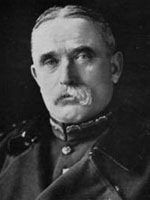 |
|
To the British General James Thomas Bradnellu, the 7th earl Cardigan (Lord Cardigan, 1797-1868) is attributed the invention of Cardigan – knitted jacket with buttons and without a collar.
To clothes, except breeches, jacket and cardigan also involved the British commander, Field Marshal FitzRoy James Henry Somerset, the 1st Baron Raglan (1788-1855). In the battle of Waterloo (1815), he lost his right hand, and he had to hide it in public, for this he began to wear a new type of hose with the humeral front part.
However, the military were also not only masters of cut and sewn. Unbeaten decoration of festive table is sweet cake “Napoleon”. What is relevant to this sweet dish has a great French general? In this regard, there are several versions, one of this version is often associated with the celebration of 1912, the 100th anniversary of the Russian army victory over the forces of Napoleon. For this anniversary, there are a number of drinks and dishes, which were decorated festively. There was also a new cake – layer of cream, made in the form of a triangle, which was resemble to the famous hat of Napoleon. Cake quickly became known as “Napoleon” and gained general acceptance. The name survives to this day, although later became rectangular shape cakes.
However, the emergence of eponyms – proper names, names that have become generic, are relating not only military but also purely peaceful people.
Each of the older and middle generations who received higher technical education, has spent more than one sleepless night over multiple drawings, executed them on sheets of drawing paper, buttons attached to the drawing board. But the creation of drawing paper and drawing boards involved to real Whatman and Kuhlman!
|
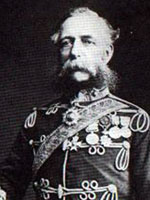 |
|
In mid-eighteenth century English industrialist James Whatman (1702-1754) designed a new paper form, which made it possible to produce a piece of paper with no trace of the grid, which was widely used at that time in the technology of paper. White thick paper quickly gained recognition among the foremost designers and planners of new technology.
|
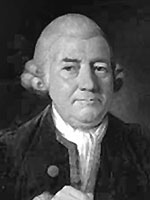 |
|
Francis Kuhlman’s invention (1877-1965) made much easier life for draftsman, which were forced to work hunched over the table before this, the invention –pantograph drawing instrument in the form of boards installed vertically or at an angle to the vertical. Although today Kuhlman barely used (it was replaced by computer design), it is worthy of respect, since it is directly related to the most famous technological development of the XIX-XX centuries, including many samples of diesel – diesel engine of German engineer and inventor Rudolf Christian Karl Diesel (1858-1913), trolleys, which mechanically moves on rails by Dreza Charles (1785-1851), case – the main hull machinery structure designed to support and protect the working parts and placing a stock of liquid oils by British engineer Carter, pullman – a large passenger sleeping railcars by American inventor and industrialist George Mortimer Pullman (1831-1897), martin – martin furnaces proposed by the French metallurgist Pierre-Emile Martin (1824-1925), kingstons – valves careen that provide access to outboard water by English engineer and inventor John Kingston ( 1786-1847 ).
How many symbols of physical units were named after the scientists and engineers! These are amps and watts, volts and hertz, joule and Kelvin, Newton, and Pascal, Ohm and Tesla and many others.
|
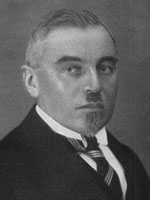
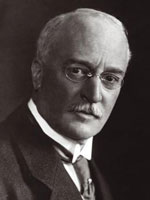
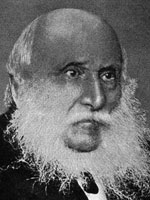 |
|
In mid-eighteenth century was invented silhouette – the kind of portrait that was made with black paper. The author of this portrait technique became Comptroller General of Finance of France Etienne de Silhouette (1709-1767). These portraits were much more cheaper than painted colors. At first glance, fairly straightforward portrait technique, that perfectly convey traits of man, even was liked by King Louis XV, who made a contribution to the rapid spread of the silhouette, not only in France but throughout Europe.
|
 |
|
But in Ireland, the UK Manager Charles Boykott have got not too honorable glory. This is began in 1880 when local officials have refused to cultivate his land. Boykott began with the struggle against the strikers, who were in response to his actions and gave him complete isolation: neighbors stopped to talk to him, shops refused to serve and even church congregation did not sit with him. Eventually Boykott had to leave Ireland, and his name was included in most languages of the world as a form of political and economic struggle.
|
 |
|
At the same time, the population of any country has a huge respect for the patrons – people who voluntarily and free of charge make a contribution to the development of science and arts, providing financial assistance from personal funds to people who are in need. Every Muscovite knows such names as Mamontov, Morozov, Tretyakov, Shchukin, and every resident of Kiev knows – Brodsky, Tereshchenko, Khanenko . And the beginning of this nobly put a Roman statesman and Vice Patron of Arts Gaius Tsylniy (70 BC - 8 BC ), who was a personal friend of the emperor Octavian Augustus.
It is said that man is alive, while the memory is alive. But memory can be different: prolonged and transient, decent and not very decent. So I want that this memory was not only long, but rewarding!
|
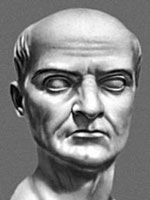 |











